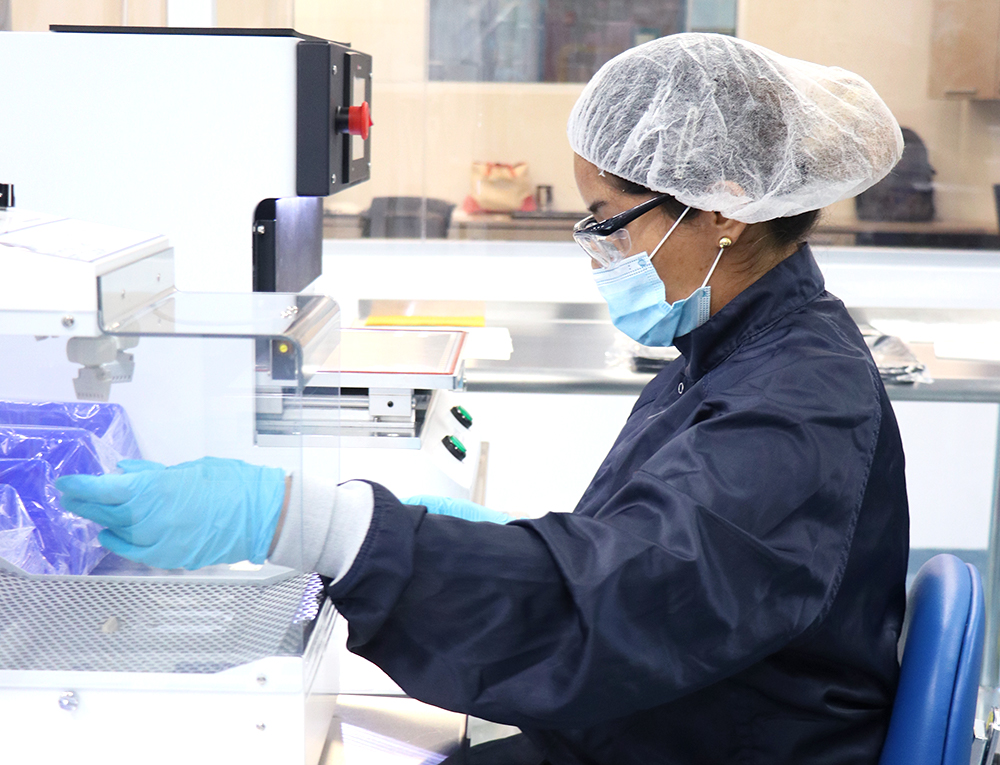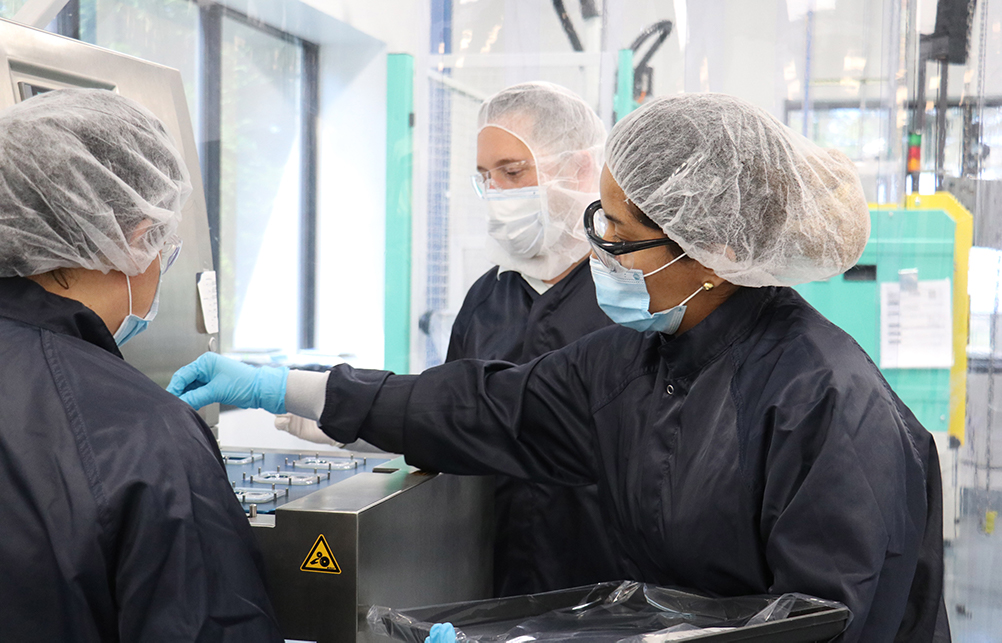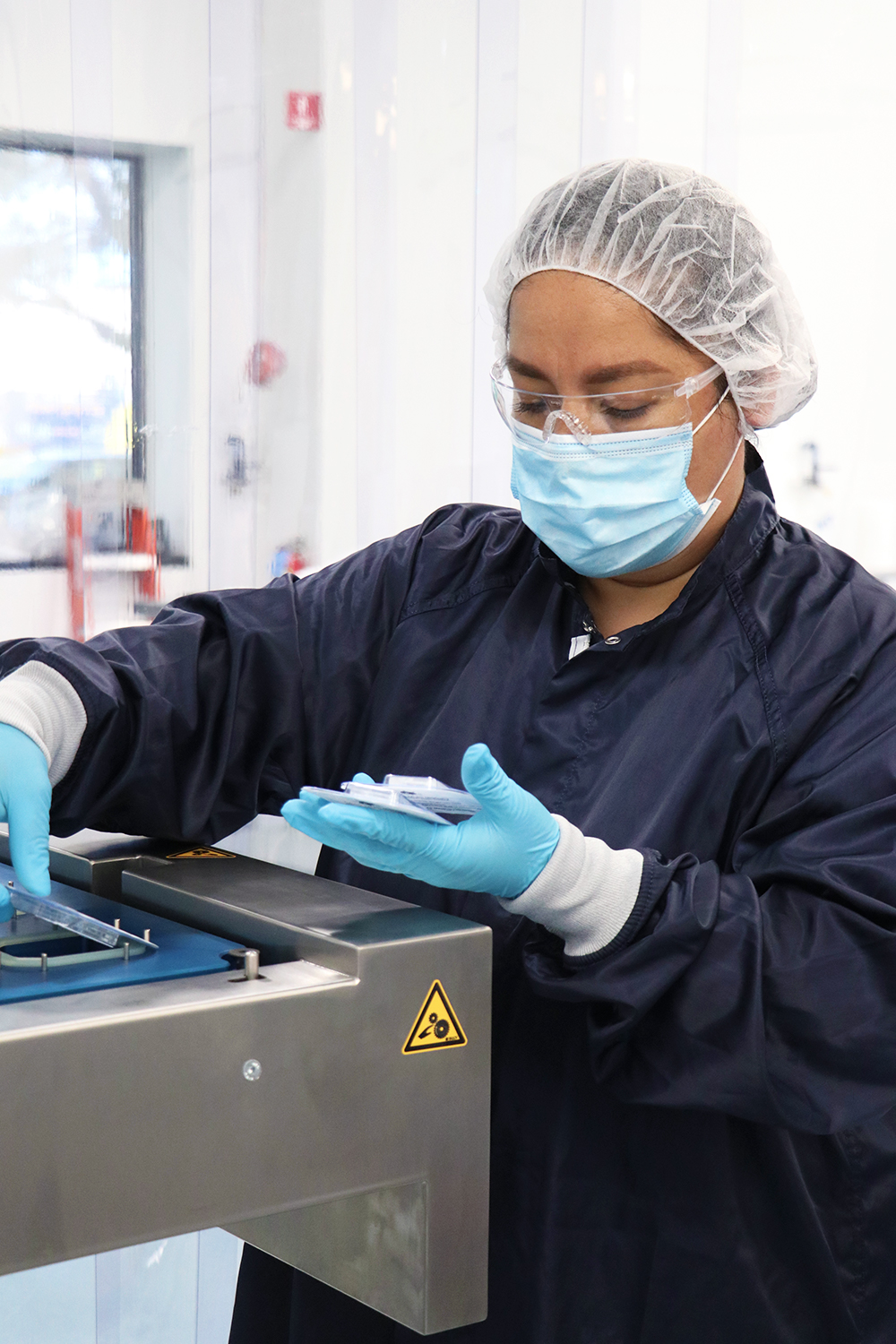Your Medical Device Assembly Needs a Reliable Process that Reduces Cycle Times and Produces Quality Parts
Do you believe that quality and productivity work inversely to each other? If higher quality consumes more resources, that must mean that productivity suffers. Right? In reality, improving quality can actually improve productivity. Inspecting quality into the process requires more resources on an ongoing basis. But investing up-front resources to incorporate quality into the process can reduce ongoing resources and lay the foundation for greater productivity.
Integrating the principles of scientific processing with lean manufacturing improves both part quality and productivity. Scientific processing qualifies the processing windows that result in quality parts. Lean manufacturing establishes material flow of the medical device assembly to maximize productivity and throughput. An example illustrates this point.

APPLICATION
A medical device client with a disposable device needed fully assembled units at increasing quantities. Three injection molded components had to bond together to a delicate membrane. The full medical device assembly went inside a thermoformed package with a Tyvek lid.
The client wanted to establish a global manufacturing operation based in the United States for critical strategic and operational reasons. They came to Natech to support completing their manufacturing development program and to establish the USA-based manufacturing capability.
SOLUTION
The Natech team developed a relationship of mutual trust with the customer. This opened the door to making the capital investment to upgrade the facility and install an ISO Class 8 Cleanroom. The quality team registered both the facility and the device with the FDA. Natech performed IQ/OQ/PQ to qualify both the molded components and the medical device assembly process.
During OQ of the medical device assembly, instead of asking how good the process needed to be to produce quality parts, they asked how bad the process could be and still produce quality parts. The engineers adjusted temperature, pressure, and time to understand which variables impacted quality. Then they designed the experiments to push those parameters to the extremes until they failed. Once they collected data on failures at the extremes, they reran the experiments to dial-in the tolerances for each parameter.
A graduate team from NYU’s industrial engineering program analyzed the medical device assembly process for their lean manufacturing class project. They mapped the value stream, reviewed the current layout, and analyzed the current process flow.
They reviewed operator and material flow within the medical device assembly cell and made recommendations to decrease non-value-creating time. Reducing batch sizes, cross training operators, and introducing single-piece flow would improve throughput. The redesigned layout repositioned the machines to reduce motion and transportation.
RESULT
The Natech team implemented these changes to the medical device assembly and qualified them during PQ. Integrating scientific processing with lean manufacturing established a processing window that would produce quality parts with high productivity.
By running multiple designs of experiments, the Natech Engineers defined the processing windows for the medical device assembly. Then introducing flow into the lean manufacturing process created reliability and predictability at a reduced cycle time.
This ensured both quality and delivery for the medical device assembly. Output per operator improved. Flow time improved. Inventory reduced. And most importantly, customer satisfaction improved.
For an initial review of your project, call to speak to our engineers at (631) 580-3506.



